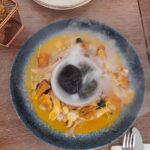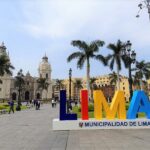As a Peruvian, let me share with you what is special and different about Christmas in Peru. Let’s take a look at our most important traditions, food, facts and everything that makes this the favorite holiday of most Peruvians, and how you can enjoy them as well.
The majority of the population being Catholic, it’s no surprise that Christmas in Peru is so important. And, same as in many other countries, it’s not just Catholics who celebrate it. Most Peruvians celebrate Christmas as a day of family reunion and festive joy.
From big cities such as Lima and Arequipa, to towns in Cusco and the jungle, there’s a cheerful atmosphere everywhere. The streets are adorned with colorful decorations, and there’s paneton and hot chocolate in every table.
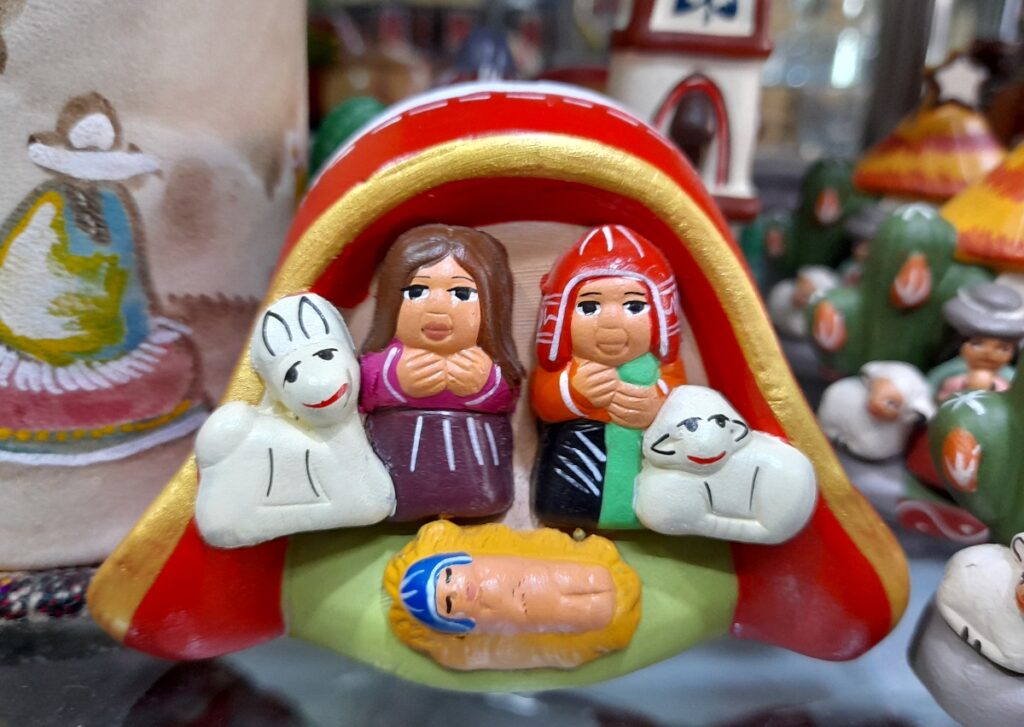
Facts About Christmas in Peru
Let’s start with some facts about Christmas in Peru so that you get an idea of the general ambiance during Christmas season.
Christmas in Peru is During Summer
Since Peru is in the Southern Hemisphere, Christmas in Peru is right at the beginning of the summer. If you are from the Northern Hemisphere, the idea of a hot Christmas can sound out of place for you. Especially if you see all the sweating Santas at the shopping malls taking pictures with kids.
There are also reindeers and snowy decoration in many places, though the reality is that the great majority of us have never seen snow.
But, hey! This is how it has always been and nobody gives a second thought to this. Most people love the summer and during the Christmas holidays beaches are usually extremely crowded.
Christmas Day is Mainly Celebrated on the 24th
As a Peruvian, Christmas has always meant Christmas Eve for me. The night of the 24th is basically everything that matters.
It’s the time when the big extended family gets together for dinner and you exchange presents. It’s also the moment when the sky of the city lights up with fireworks as if it was the biggest celebration ever.
As I became and adult and started meeting people from other countries, I realized that other dates are equally important for them as the 24th is for us. It’s funny, for example, that for me Christmas is on the 24th and for my Dutch partner the 26th is very important, but no one really cares about the 25th.
On the 25th, people wake up late and have a lazy day. We usually eat leftovers from the night before, go out for a walk, and possibly visit the other side of the family.
People Get Payed A Double Salary
One of the reasons why Peruvians love the Christmas season, is because Peruvians get payed a double salary in December.
This happens twice a year, actually. The first time is in July, for the National Holidays, or Fiestas Patrias, one of the most important celebrations in Peru.
The second time is in December, so people usually have enough money to spend in presents and maybe even go on vacation for some days.
It’s Vacation Time
Another reason why people love Christmas, is because in Peru the Christmas season marks the end of the school year. Schools and universities close some days before Christmas, and won’t reopen until mid-March.
Christmas Traditions in Peru
The following are some of the most common Christmas traditions in Peru. Though they are common and widespread traditions, some of them will be more present in bigger cities than in smaller towns (like Santa Claus).
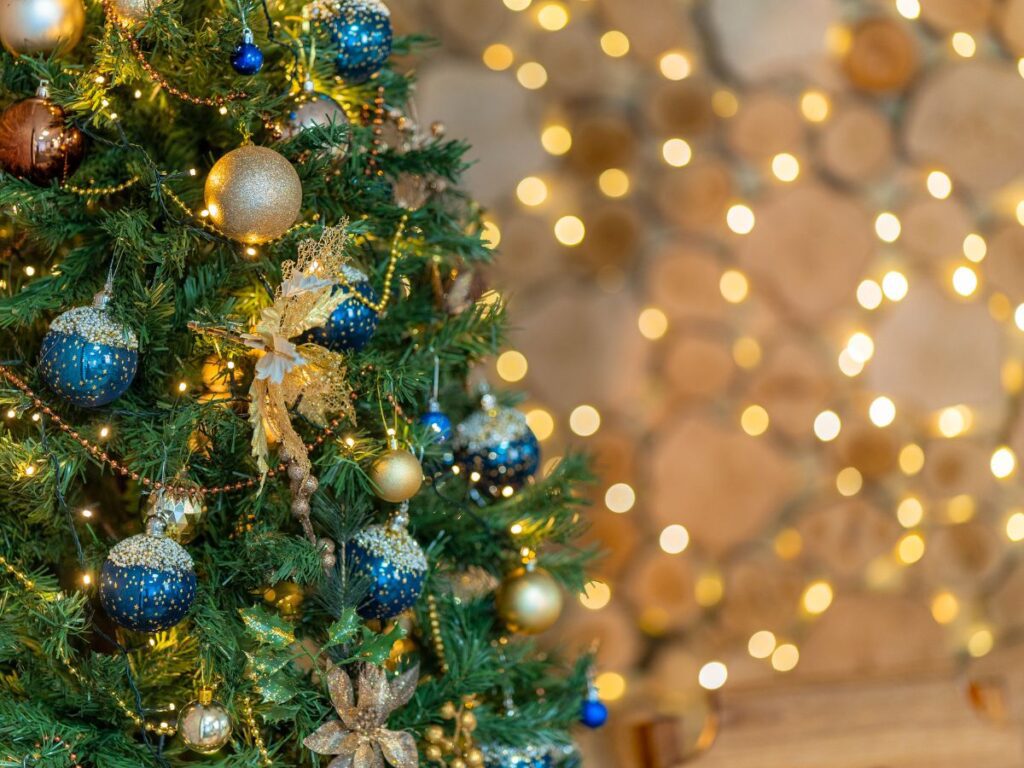
Christmas Dinner
The central part of Christmas in Peru is Christmas dinner. It’s a time when you get together with family, usually involving, parents, children, grandparents, aunts, uncles, nieces, cousins, etc. It’s normally a big family gathering, where everyone exchanges presents.
Traditionally, people have dinner at midnight, when Christmas begins. I know that this late dinner is supposed to be the official tradition, but I have to say my family has never done this since it’s too late. Also, I don’t know any other families that waits until that time to eat. But I’m sure a lot of families must do.
At least for us, midnight was always the time when we opened our presents, which were waiting for us under the tree.
Fireworks
Talking about midnight, that’s the time where, for about half an hour, fireworks won’t stop. Everyone, everywhere is lighting them up. If you are in Lima, for example, and have the opportunity to look at the sky from a building at the boardwalk, you will witness a stunning spectacle.
It’s quite unfortunate for animals, babies and very sensitive people, though, and, along with New Year’s, this is the night of the year when firefighters have to attend most fires.
Mainly for this last reason is why they are officially illegal. But in reality, they are sold everywhere and I don’t think anyone in Pery ever had any issue with the Police because of lighting them.
The Nativity Scene
The nativity scene, along with Christmas trees, is something very traditional in Peruvian homes for Christmas. The miniature Baby Jesus is absent from the scene until the 24th at midnight when it is placed there to mark his birth.
In Cusco, they have the tradition of buying little clothes for the Jesus miniature at big fair that takes place in the city (the Santurantikuy fair), the so that people can dress him up in new clothes.
One of the most popular and traditional nativity scenes are the retablos from Ayacucho. Retablos are miniature wooden houses with small figures depicting different scenes of the daily life in Ayacucho and other motifs. One of the most iconic ones is the nativity scene (it’s also a nice Peruvian gift to take back home).
Christmas Trees
Like in many countries, the Christmas tree is also an important symbol of Christmas in Peru. When I was little, in Lima, there were lots of Christmas tree sellers along the Via Expresa in Lima (a major expressway). They were real, medium-sized fir trees.
For many years already I haven’t seen real trees being sold at Christmas. Instead, they are all made of plastic now.
Presents are kept under the Christmas tree until the midnight of the 24th, when relatives exchange and open them.
The time to put away the Christmas tree is on January 6th, the day of Ephiphany (called Bajada de Reyes).
Santa Claus
Yes, Santa Claus also visits Peru and leaves presents for children under their beds. We have no chimneys here, but he always finds his way in.
The Secret Friend
“The secret friend” is the same as the “Secret Santa” tradition in other countries. It’s a popular tradition at school and work, where everyone writes their names down in a paper.
You pick up a paper with someone’s name in a lottery, and you will have to give that person a present. In offices, there’s usually a price cap, and the present is not supposed to exceed a pre-established limit.
Chocolatadas
Another important Christmas tradition in Peru are “chocolatadas”. These are big events where people hand out hot chocolate, usually to children. It can be just hot chocolate, or sometimes it can be accompanied by a slice of panetón.
Normally they take place at poor neighborhoods, schools for low-income families, orphanages, or rural regions. They are usually organized by companies, or by families that want to do something meaningful for others during Christmas.
Canastas Navideñas (Christmas Baskets)
One of the Christmas traditions that people enjoy the most in Peru, is receiving their canasta navideña, or “Christmas basket”.
This is a basket handed out by employers, with food and drink items. Simple canastas navideñas will just have a few simple food items, and will include a paneton (or not even, in some cases).
But canastas of people who occupy higher positions in a company, will usually have champagne, wine, chocolates, and cookies, along other gourmet items.
Christmas Traditions in Different Regions of Peru
The previous section was about general Christmas traditions in Peru that you can find relatively throughout the whole country. But several regions have their own local traditions as well, which are unique to those areas.
Takanakuy
One of the most unique and strange Christmas traditions in Peru is the Takanakuy, which takes place in some areas of the Cusco region.
The tradition consists in resolving conflicts through physical fights with other inhabitants of the town, on December 25th. If you have a disagreement with someone, you can call them to the town’s arena. The rules are simple: only punches and kicks are allowed. No grabbing, attacking from behind, or hitting a fallen opponent.
The fights last around three minutes and they conclude with a hug between the fighters. This signifies the resolution of the conflict, and the winner of the fight also wins the dispute.
This tradition originated in colonial times, when Spanish masters made their slaves fight for entertainment during Christmas. Over time, Takanakuy merged with local traditions, and it became a way settle disputes and, in a strange way, promote peace during the Christmas season.
Santurantinkuy
The heart of Cusco’s Christmas celebration is the Santurantikuy, a Christmas market that takes place at the main square on the 24th of December (lately it has been starting one or two days before).
While you can find a wide range of items such as clothes, bags, and Peruvian souvenirs, the star items in this market are the miniatures for the nativity scenes.
The assortment includes miniature animals, bridges, houses, and finely detailed wells. The diverstiy of figures is so great that you could make a nativity scene occupying an entire room.
But the most iconic of these figures is the “Niño Manuelito”, which is the Andean version of Jesus as a child. In Cusco, he is represented as a local shepherd with a thorn in his foot and is adorned with real hair from the first haircut of a child from the community where the figure was made.
The Santurantikuy is also the ideal place to acquire new clothing for the Niño Manuelito figure, which Cusquenians have to like dressed up in new and clean clothes for Christmas.
Coca Leaves Reading
Another popular tradition that blends Christianity and local Peruvian traditions is the coca leaf reading at Christmas.
While you may know or have heard of coca leaves from the coca leaf tea that travelers drink for altitude sickness in Peru, they are also used as a traditional divination method in the Andes.
On Christmas Eve night, experienced family members initiate the coca leaf reading. The results will tell them how general matters, such as wealth, health and relationships will go on the following months.
The Typical Christmas Food in Peru
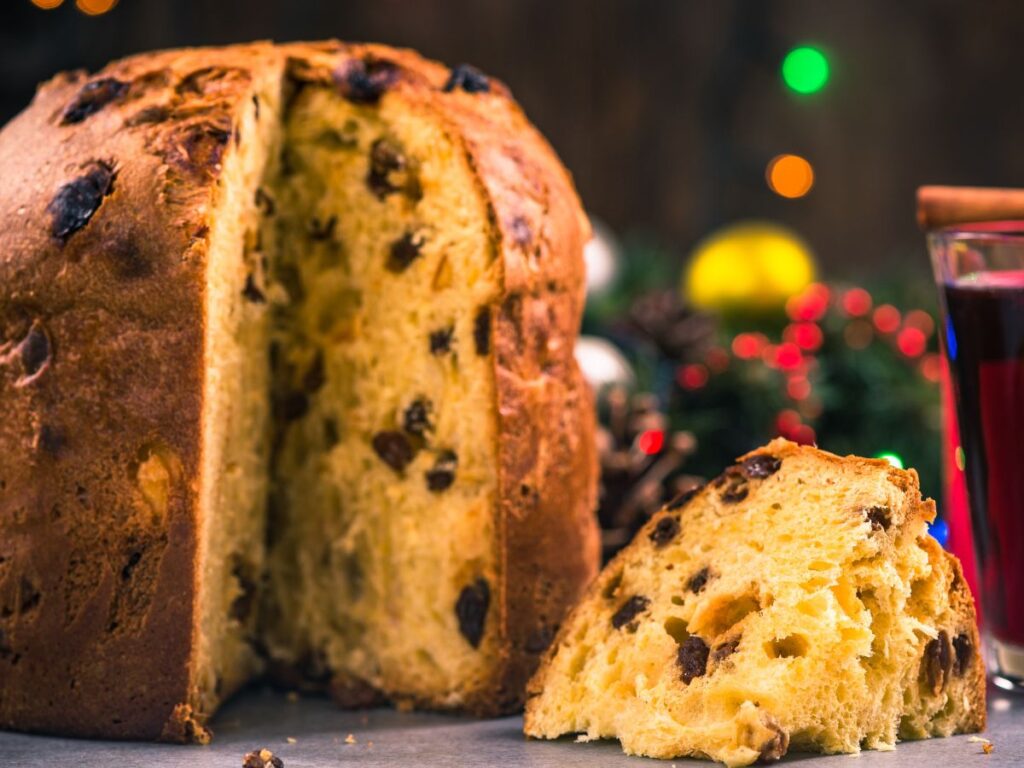
The Christmas Dinner Food
Christmas dinner is the main event at Christmas, and everything revolves around food. The central dish at dinner is turkey. It’s often accompanied by rice with raisins, applesauce, and a sweet salad (usually made with lettuce, nuts, pears, bacon, and passionfruit, among other ingredients). In the highlands, pork will often replace turkey.
In many cities, like Lima, dinner is often accompanied by a glass, or many, of champagne or other kind of alcohol. On the other hand, in the highlands, like in Cusco, chicha de jora will be a popular drink to have at the Christmas table.
Speaking as a vegetarian, I have to say that unfortunately Christmas dinner food is not so appealing for me. There are not so many vegetarian dishes in Peru, and Christmas is not the exception.
Panetón
Panetón is a big, dome-shaped, sweet bread originally from Italy, but which became the main Christmas food item in Peru. The bread is traditionally filled with raisins and candied citrus peel, though more recently the “chocotón”, a variety filled with chocolate, has become more popular.
During all of December, you will find panetón filling whole rows of supermarket shelves, and they will probably be there until January or even February (though in recent years, they have also been selling it in July, for the National Holidays).
Panetón thus is a very popular Christmas food item in Peru. A lot of people will have it for breakfast, with coffee, dinner, or basically at any time of the day. It can be eaten by itself, though some people like to eat it with butter (this combination is really a calorie bomb).
Hot Chocolate
Another symbol of Christmas in Peru is hot chocolate. The tradition of drinking hot chocolate in Chrismas comes mainly from the Cusco region. That’s no surprise, as Peru is a big cacao producer, and a lot of good quality cacao is grown in the jungle of Cusco. Regardless, drinking hot chocolate has become a country-wide tradition.
Usually, they sell the chocolate in bars flavored with cinnamon and clove. You have to break it down and warm it in a pot with milk, until it dissolves and becomes hot. This is why we also call this kind of hot chocolate “chocolate de olla”, or “pot chocolate”.
Where to Spend Christmas in Peru?
If you are going to be in Peru during Christmas and have no family here, you don’t really have many interesting options for Christmas dinner.
As we have seen, this is mainly a family holiday, and it’s a big celebration in Peru, so most restaurants will be closed on Christmas Eve. Actually, the only restaurants that you might find open will be the restaurants at hotels.
The 25th is a day where many people will eat the leftovers of the 25th, but some other people will go out for lunch or dinner. So on the 25th, maybe you will find a third of the restaurants open.
Since options for having a Christmas Eve dinner are limited in most places in Peru, I suggest not deciding where to spend Christmas based on that. My suggestion would be to spend Christmas in a place like Cusco, where you can visit the Santurantinkuy market.
Lima is also a convenient option if you want to stay in a comfortable hotel and have a nice dinner at a big hotel. Or if you are a vegetarian, some vegetarian/vegan restaurants in Lima have great takeaway Christmas dinners.
Also, the streets will be very lively both on the 24th and 25th, and you will find many shops and most malls open if you want to get yourself a present.
Before You Go…
If you are intrigued about other traditional celebrations in Peru, I invite you to read this post about festivals in Peru, where you can read about the most iconic celebrations in the country.


